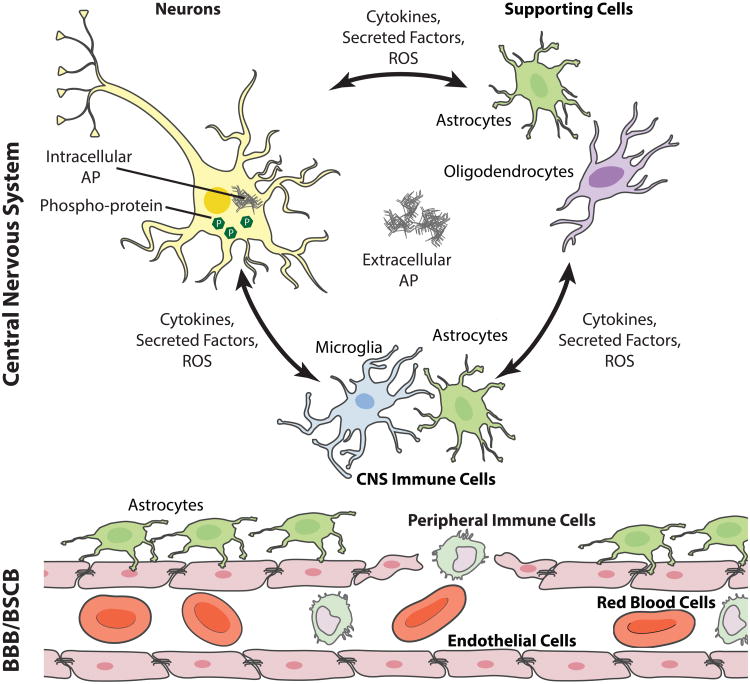Figure 1.
NDs are associated with broad physiologic responses in the CNS. A primary feature common to many NDs is the neuronal expression of intra- and/or extra-cellular aggregating protein (AP). Intra-neuronal APs, including α-synuclein, tau, the huntingtin protein, and superoxide dismutates-1 (SOD1), harm neurons directly by interfering with cellular processes, including microtubule and synaptic function.7–11 Extracellular APs, including amyloid-β, α-synuclein, and tau not only affect neurons, but stimulate responses from supporting cells (e.g., astrocytes and oligodendrocytes), and immune cells (e.g., astrocytes, and microglia). The supportive and immune cell response leads to production of reactive oxygen species (ROS) that are directly deleterious to neuron survival.22 Cytokines and other factors may also be directly harmful to neurons23 and promote BBB/BSCB leakiness.19,20,22 Combined with enhanced cytokine production, the leaky BBB/BSCB enhances peripheral monocyte and leukocyte infiltration, contributing to homeostatic dysregulation.21,22 This figure was created using cell art adapted from Servier Medical Art (http://www.servier.com/Powerpoint-image-bank).

